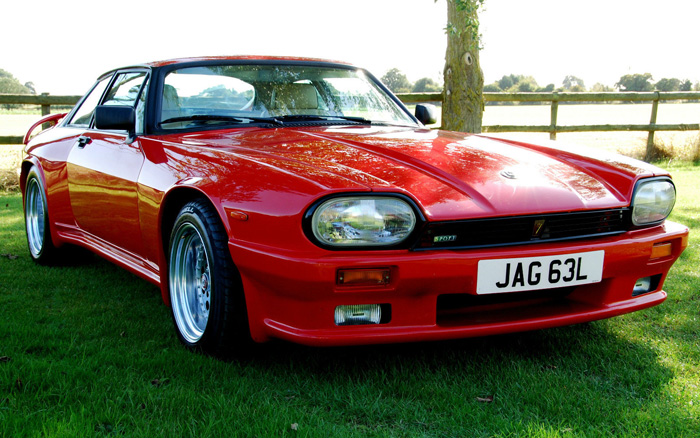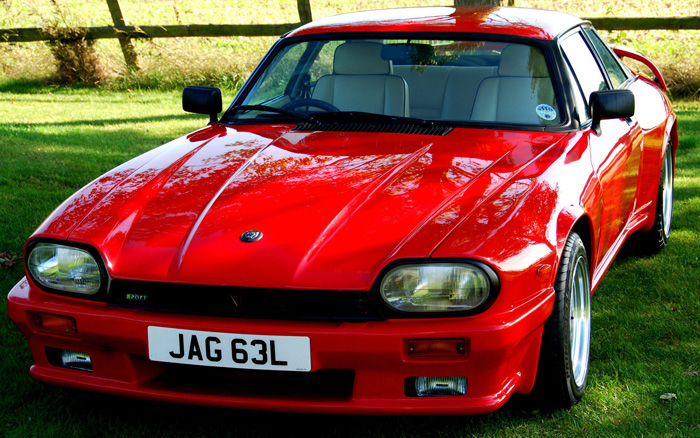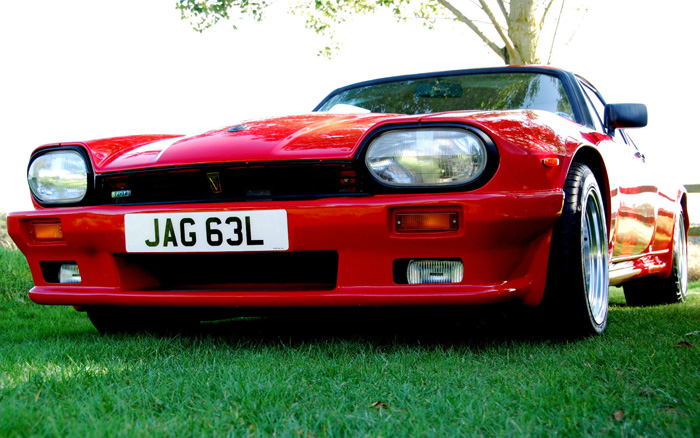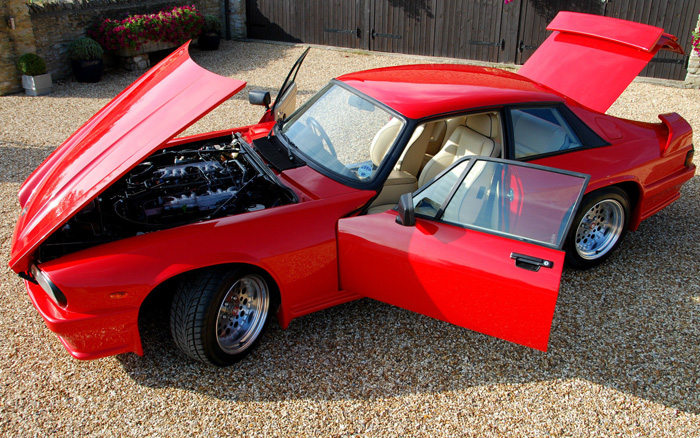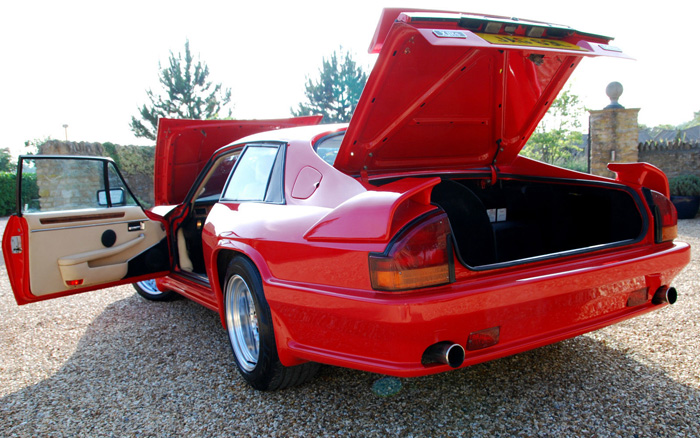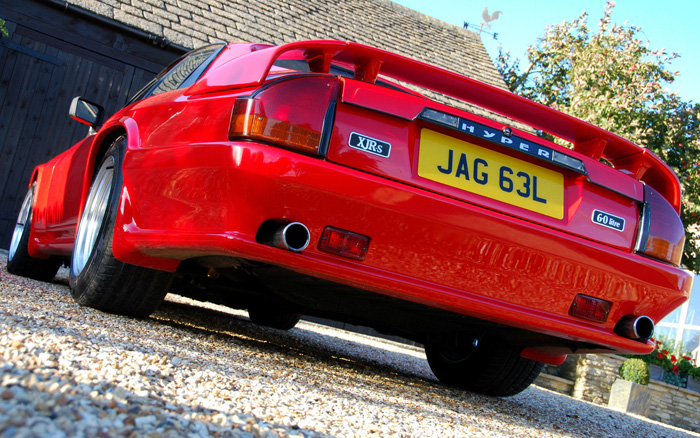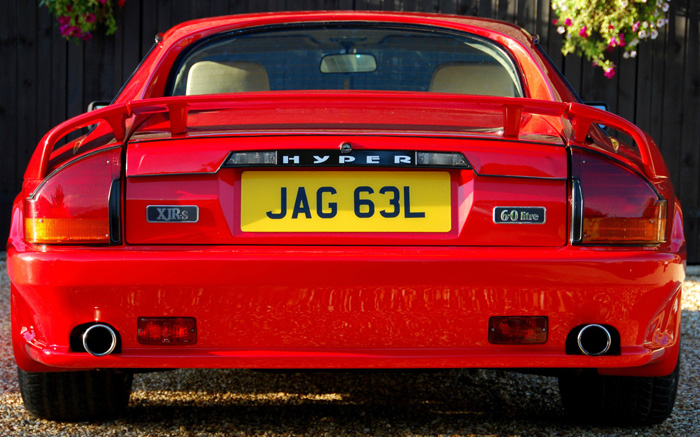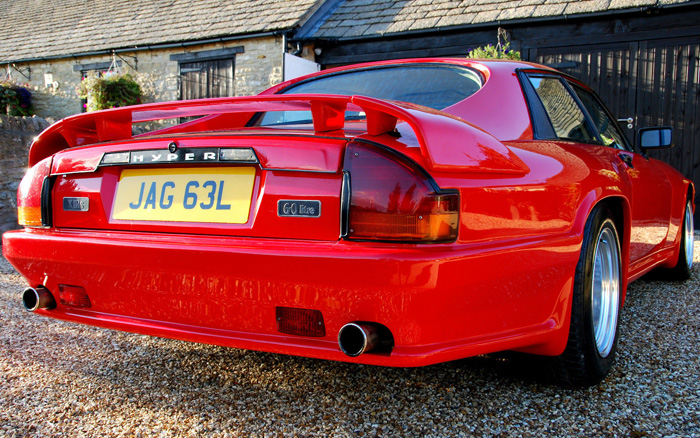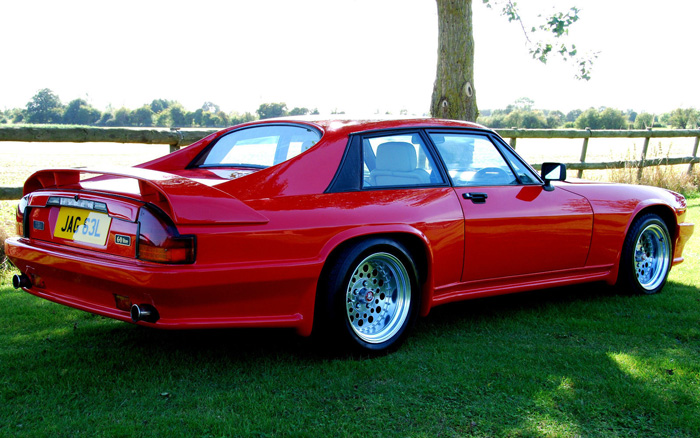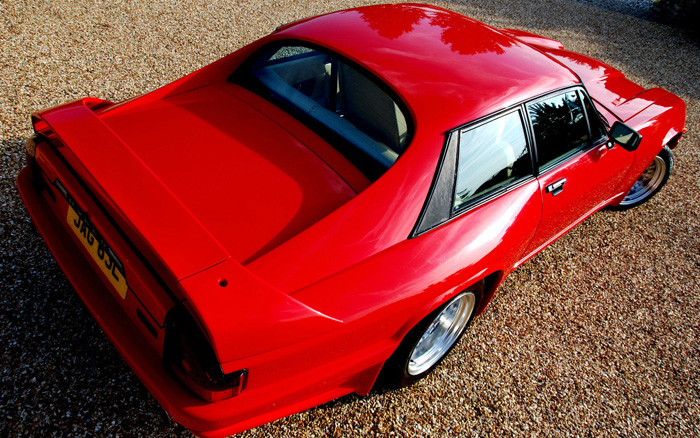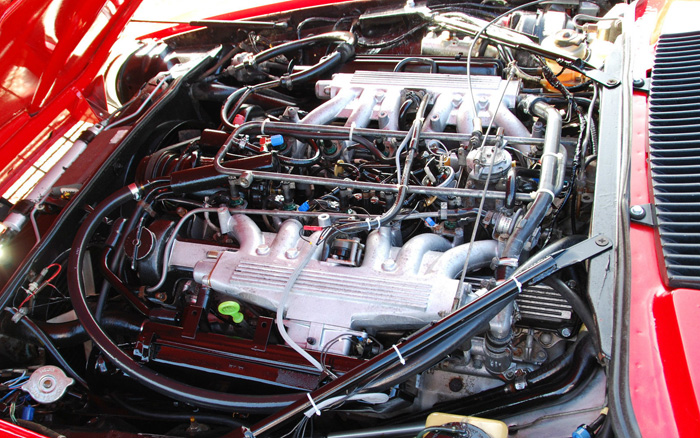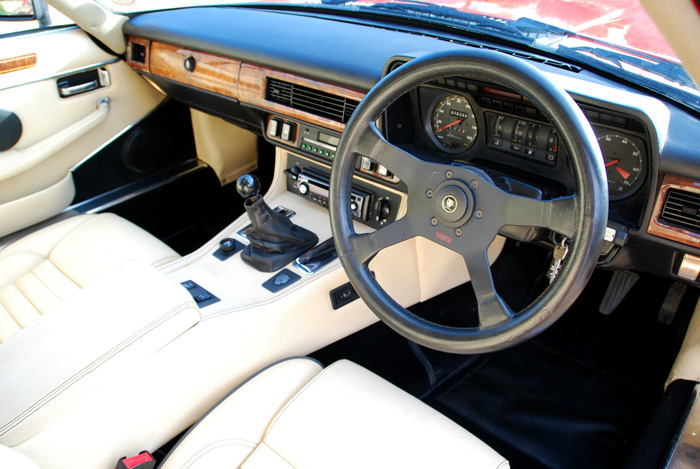1976 Jaguar XJ-S 6.0 MK3 Prototype Hyper Sport
(Featured on 27th May 2014)
Make: Jaguar
Model: XJS 6.0 Mk3 Prototype
Year: 1976
Sellers original description:
The only opportunity that you may ever have to acquire the original body prototype of the Mk3 HYPER SPORT JAGUAR XJ-S.
One of only two ever built with full steel bodies. The first, which was the press car, no longer exists.
The other car, 002, and the one offered here is with its original manual gearbox and 5.3 V12 engine rebuilt to 6.0L by Ron Beaty's Forward Engineering.
Body modifications were built to exacting standards as this was the car from which the moulds were made for the fibreglass bodied cars which were to follow.
Latterly fitted out along XJR-S trim lines and with Hyper suspension upgrades it is the actual car presented to Jaguar officials as Hyper's idea of just how they thought a production version the Jaguar XJ-S Sport should go on to be.
Offered now for sale and being sold by and listed on behalf of its owner, designer and creator, Paul Hands, from his private collection.
It is an absolute must have for any Jaguar enthusiast or collector.
They do not come any rarer - this steel bodied Hyper Sport XJ-S is the only one that remains anywhere in the world.
A stunning looking 'driver's car' car, an opportunity not to be missed and a shrewd investment we think!
Launched in 1975 the Jaguar XJ-S had quite a mountain to climb, for it was seen by some as the successor to the glamorous and hugely popular E-Type. However, in reality, the car was never envisaged as a direct replacement for the E-Type - being more of a Grand tourer than an out and out sports car.
Largely designed by Jaguar’s legendary Malcolm Sayer the XJ-S had a top speed of 150mph and 0-60 time of under 8 seconds it slipped through the air far more efficiently than the E-Type and its excellent ride, comfort and handling were justly praised by the mid Seventies motoring press.
Although everyone agreed that as a high speed tourer the new XJ-S had few rivals many others agreed that it lacked something dramatic in its styling.
Then there was the way that the XJ-S drove - to soft said the critics not the 'proper' sports car Jaguars used to be!
These shortcomings were soon picked up by sports car conversion specialists.
At the end of 1984 Tom Walkinshaw Racing (TWR) announced their intention to build a range of special XJ-S coupes calling them the XJR-S. Upgrades included body kits, interior kits and modification to suspension, increased output from the 3.6 and the 5.3 engines along with a 6L engine.
These cars were a private offering without the backing of Jaguar.
However this was to change in 1988 when a new company, Jaguar Sport, was formed which was a 50/50 split with Jaguar and TWR. The idea was that cars were part built at the Factory then shipped to the TWR facility on Station Fields Industrial estate Kidlington Oxford and latterly Jaguar Sport at Bloxham, where the custom finish ordered through Jaguar dealers was added before the finished car was delivered to that dealer.
The XJR-S sold around 300 which was all well and good but the looks of the car to many were really quite tame and not distinguishable enough from the standard XJ-S. This was addressed by one of the most renowned names in sports car racing history, Lister.
The Lister Jaguar added engine mods and a full body kit but for some it was felt that there was still room for improvement.
TWR/Jaguar Sport cars were only available new and the Lister conversions were, in the main, only carried out on new or nearly new cars.
In 1991 the cost of a fully specified Lister could exceed £200,000 which was far more than a Aston V8 Vantage or Lamborghini Countach.
There was a glaring gap in the market here for XJ-S conversation kits that could be fitted a customer's own car at reasonable cost.
Enter Jaguar transformation specialist Hyper Engineering.
HYPER
Paul Hands, in the best traditions of those before him when it comes to modifying Jaguars, cut his teeth on the race track.
In the business of building racing Jaguars for years from his base in High Wycombe in the late eighties Paul Hands, founder of Hyper group of companies, began modifying the XJ-S for road use.
Body, interior, road wheels and mechanical upgrades were available to transform your standard every day XJ-S into a sleek Hyper XJ-S.
Entry level Hyper body transformation kits started with The MK1 which gave you a front air dam designed to fit under the original bumper, allowing retention of chrome , plus rear spoiler and side skirts.
Mid range was the Mk 2 which also gave you the front air dam, rear spoiler and side skirts blended to the existing body over the bumper area.
Top of the range was the Mk 3 wide body transformation package that completely changed the look to give head turning style to your XJ-S.
The Mk 3 package would give you the Mk 2 body kit and in addition wider wings made from high-quality impact-resistant fibre-glass. These bigger wings, 4" wider at the rear and 3" wider at the front, allowed the fitment of very wide wheels and tyres to enhance the look and performance even further. The package also included a unique 3 piece rear boot spoiler and a modification that extended the rear windows reward, further improving the slick look. A total repaint finished it off.
Mechanical upgrades were available to the suspension as were a manual 5 or 6 speed gear box or the Hyper drive 'clutchless manual' gear box. Steering, manifold, exhaust 'Hyper brakes' and 'Hyper cool' - oil cooler were also available.
The wide bodied Hyper Sport XJ-S Mk 3 was much acclaimed by the motoring press in the early nineties after they tested a purpose built steel bodied press car equipped with the Hyper Drive gearbox alongside other modified offerings from Lister, PBB Monaco, Railton and Sutton. Sadly This car, car number 001, was written off in the nineties.
Only one other steel bodied Hyper Mk 3 was ever built, car number 002. When it was built 002 was not intended to be a car for road use but rather to serve as the prototype from which the mouldings were made for the Fibre glass wide body versions that were to follow.
With business set to boom and Hyper Engineering becoming recognised as the experts in optical and performance tuning for Jaguar cars new premises were required. Where better than alongside TWR on the renowned Stationfields Industrial Estate in Kidlington Oxford.
JAG 63L
As we say Hyper had recognised a niche in the market for transforming customers existing XJ-S's to give much improved styling and performance at a much reduced cost over rival companies that modified new or nearly new cars.
That is not to say that they were in the business of transforming any old XJ-S though. A thorough examination would be carried out prior to any work being started to ensure that they were working on 'solid foundations'. Back in the nineties the car chosen to be the steel wing prototype for the moulds that were then to be used for making the wide bodied fibre glass wings certainly needed to be a solid example.
JAG 63L was first registered in June 1976. It was then a standard 5.3 V12 pre HE XJ-S with one of the last of the 4 speed factory fitted Jaguar close ratio manual gear boxes, which it retains today.
Believed to have first been a demonstrator the car later went on to be registered by a business man based in Jersey who regularly travelled on German Autobahns - where there were no speed limits.
Having used the car for a while on these journeys the owner decided that he really needed a little more Power and a little higher top speed - some German built cars, it would seem, were overtaking him on the Autobahn and that quite simply would just not do!
If you wanted your 5.3 Jaguar V12 souped-up in the 80's who better to do than Forward Engineering the company formed in the 60's by Jaguar's competition dept experimental engineer for the V12, Ron Beaty.
In the early eighties the 5.3 engine of JAG 63L was rebuilt by Forward Engineering to a 400 plus BHP 6L. This apparently put an instant stop to any further embarrassing moments in Germany for its owner! It would seem that at this time an under bumper body kit was fitted by a company associated to Forward Engineering - BLE.
In 1987 the owner of JAG 63L (then on Jersey plates) traded the car in for a new Lister Jaguar.
The car was then acquired from Lister by Paul Hands of Hyper Engineering, although registered at that time in the name of a colleague.
Work began on transforming JAG 63L into the steel bodied prototype for making the moulds from that were to be used for the Glass Fibre wings that would be fitted to the Hyper Sport Mk3.
The BLE under bumper body kit was removed and replaced with Glass Fibre Hyper sport front dam and rear body kit with provision for front and rear fog lamps. Hyper glass fibre side skirts were also fitted.
Following a design created by Paul Hands which gave a more sweeping rear end that, unlike some of its rivals, was wider at the back than at the front the wings were carefully and meticulously fashioned from steel to be used to make the mould for the Glass fibre wings that were to be offered in the Hyper Sport Mk 3 Transformation package.
With the moulds made JAG 63L, car 002, with its task completed was laid up in storage for the next few years.
Following the theft and subsequent insurance loss of car 001, the press car, Hyper turned its attentions to getting JAG 63L on the road with the intentions of presenting it to Jaguar Sport as a prototype of just how they believed the next XJ-S Sport should look. It should be emphasized that this was a body only prototype with the aim of demonstrating how Hyper visualised the exterior of the next generation XJ-S sports should look.
The interior, which had been removed when the body modifications had been carried out, was replaced with that from a much later HE XJR-S 6.0L with new black carpets (not genuine Jaguar) and TWR steering wheel.
Many external trim items such as the front grille and de-chromed items were also replaced.
Specially made wheels were fitted, wider at the rear, and that gorgeous 3 piece rear spoiler.
Hyper suspension all round.
It was decided to build this prototype with standard XJ-S headlights rather than change them to four round ones as the press car had been as Jaguar associated 4 lights with US spec cars.
The whole car was repainted in the nineties to a high standard in its original Sebring Red.
Since 2005 the car has been registered in Paul Hands name at his home address. The V5 shows 3 previous keepers and the present odometer reading is circa 77,000 although the speedometer was changed as part of the interior and dash upgrade. Paul tells us that the speedometer that was removed had a reading of circa 35,000 miles.
BODYWORK:
It is at least fifteen years or so since JAG 63L was repainted. No paint work other than the odd touch up with a brush has been carried out since that time.
There are no significant signs of any major rust bubbles which would seem to be verification to the quality of the work carried out on the body and the condition of it prior to that work.
There is some micro blistering in places 15 years on from the repaint but our magnetic tests revealed no loss of magnetic attraction anywhere other than, of course, on the fibre glass body kit parts.
As JAG 63L started off its Hyper life as a steel winged body prototype from which were made the moulds for the cars that were to follow there were small gaps between the extended steel wings and the original steel of the cars inner arches. These gaps have been sealed with Glass fibre which is of course not visible from the outside.
Minimum body filler was used make the joins of the new wings appear seamless but of course it was necessary to skim those joints with some.
The paint retains a fantastic lustre.
Boot bonnet and door shuts are excellent.
The original body parts of JAG 63L are approaching forty years old now and consequently some repairs have been made to the underside over the years. You can for example see, when you lift the carpet, that the passenger foot well has been repaired and whereas no other repairs seem glaringly obvious although no doubt some others will have been done.
The specially designed and made 1980's wheels are excellent with just the start of oxidation on one of them.
INTERIOR:
The interior was fitted some years back to bring the car more up to date as an example of what the cars creators thought should be done. It was not new then and has seen use since but is very presentable with no undue wear, rips or tears to speak of.
However there is a little loss of dye to the leather in places, the door speakers are just covers, the carpets are good but not original quality and the veneer on the dash, which was also replaced with the rest of the interior, is just starting to deteriorate.
The headlining has just been replaced and there are some adjustments that have been made on this prototype car to the side trimmings of the headlining to allow for the extended rear windows but they do not look out of place.
UNDER THE BONNET:
Overall the under bonnet area presents well though both inner wings are over painted black and there is evidence of an older repair to the O/S one.
The inside of the bonnet has been painted in body colour
IN THE BOOT:
Re-trimmed with the same colour and quality carpet as the inside
ON THE ROAD:
Wow - we can honestly say that there are very few cars that we have enjoyed driving more than this one!
Although only a prototype (often proto types are not even drivable let alone road worthy) JAG 63L drives very well and everything seems to be working, even the air conditioning and electric widows etc.
The car starts first time every time on automatic choke but don't expect a standard XJ-S on the road.
With the manual gear box and the 6.0L the whole car has a much more of a driver's car with a very lively and "seat of the pants" feel.
Paul tells us that there was still more to go when he tested it (on the track of course) of speeds of up to 165 mph!
Hyper suspension coupled with the wheels makes for a much stiffer ride and better handling.
Hyper tells us that there are no know problems to report.
HISTORY FILE:
1. V5c in the name of Paul Hands
2. MOT 14 January 2014
3. Car check report showing clear on insurance and finance.
4. Copies of various magazine articles from the eighties and nineties
5. Some old photos pre work
SUMMARY:
The Hyper Sports Mk3 is without doubt one of the most beautiful looking XJ-S's ever.
It is a gorgeous thing!
It was shown to and discussions were held with Jaguar officials about a version being produced.
It is unique, it is the only remaining car of just two steel bodied cars ever built. It is being offered for sale by its creator from his private collection and has never before been offered for sale.
It should be remembered though, in fact it should be forefront in your mind, that JAG 63L is a body prototype created from a standard 1976 XJ-S. In describing our own cars for sale we often use words such as original, non modified and retaining all of its factory fitted glass trim and paint etc. Of course we cannot say any of this about JAG 63L.
If you are not sure what a prototype is other meanings are trail product, sample or example of what could be so please do not expect to find the condition to resemble factory production line finish or that of vehicle that has had a recent nut and bolt restoration. If you have still have doubt of what to expect from a Prototype finish then you should view before you bid.
A simple example of what we mean, although not limited to just this, can be found in the rear window extensions which add to the improved sleek look. Correct triplex glass was used here. However as we have said the internal trim had to be improvised as did the window rubbers. Whereas the rubbers serve their purpose as they should they do have joins in them. These joins and other improvisations, of course, would not have been there on a none prototype car.
It is usable if you wanted something very, very different to turn heads. It is road legal with MOT till next year. However JAG 63L will be of most interest to Jaguar enthusiasts and collectors. XJ-S aficionado's will surely be particularly eager to own such a car.
In any event you will never get the opportunity to own another as this one is the only one in existence - anywhere in the world.
Photos:
